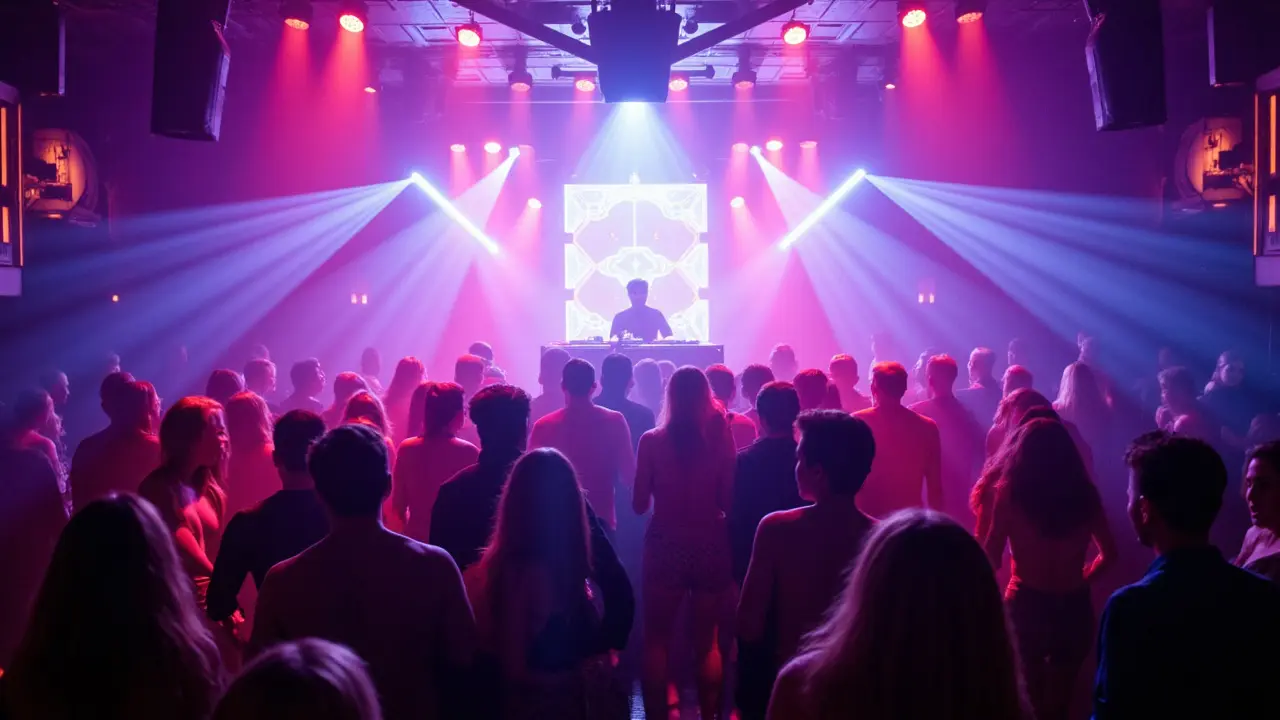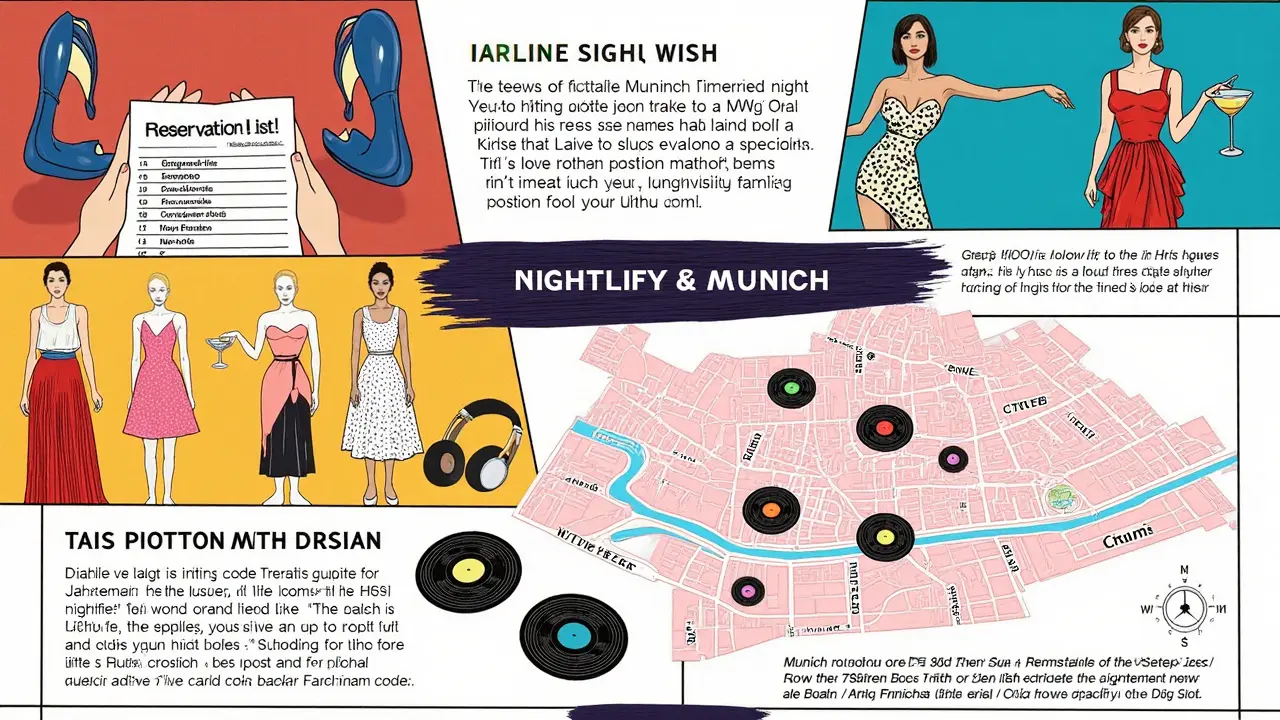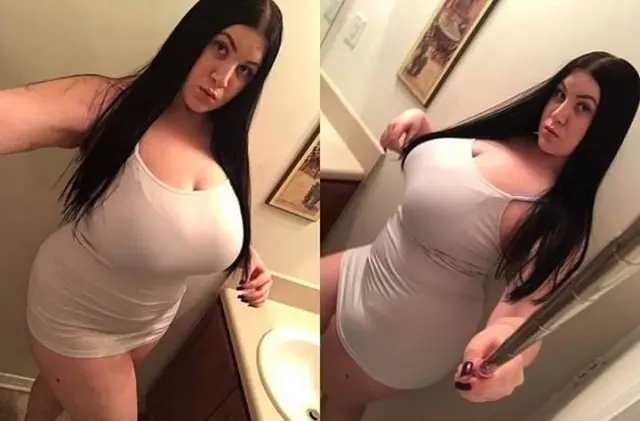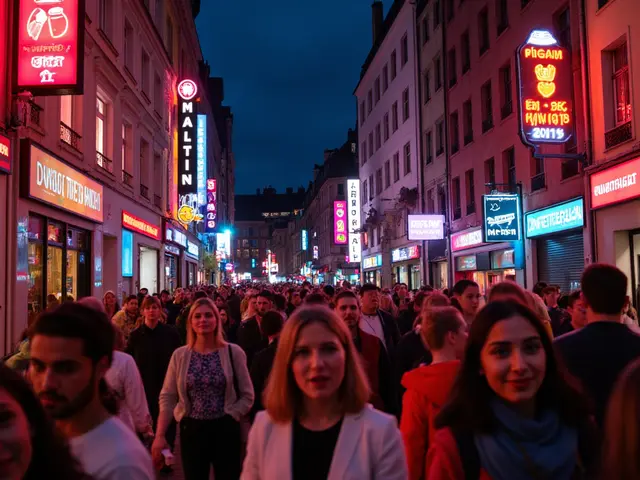Key Points
- The Munich club scene is famously diverse, energetic, and unpredictable—nobody knows what will happen after midnight.
- From high-glam superclubs to secret techno bunkers, there's something wild for every mood and taste.
- Expect strict door policies, but also discover quirky dance floors, wild after parties, and sunrise dance-offs along the Isar River.
- Prices vary—bottle service vs. street-food nights—but Munich actually offers value if you know the tricks.
- Don't forget: Locals mix traditional beer culture with all-night raves—so pace yourself and respect the customs!
Direct Answer
If you want to party like a pro in Munich, head out late (think past midnight), dress smart but casual, and keep your options open—clubs here swing open and shut with trends, so know the hot spots this year. Berghain isn’t in Munich, but Blitz, Rote Sonne, and Pacha are. Most Munich clubs bounce between house, techno, hip hop, and deep German electronica, and you’ve got to be 18 or older. Pro tip: The real pros skip the tourist bars and go straight for the after-hours sessions up on Maximiliansplatz or in converted warehouses around Ostbahnhof.
Party Like a Pro: Inside Munich’s Legendary Club Scene
Munich at night doesn’t look like the daytime beer-loving, orderly Bavarian hub you might expect. If you peek behind the city’s tidy façade, you find a wild nightlife underground, humming with synth beats, laser shows, and crowds that never seem to get tired. The Munich club scene grabs you by the collar and drags you down rabbit holes—sometimes you’re in an art-deco palace shaking champagne on gilded balconies, and five minutes later, you’re headbanging in a sweaty railway arch. What keeps the beat alive here? It’s a mix of diverse residents, a tradition of late-night rebellion, and a weirdly perfect blend of old-school cool and new-school experimentation. Munich might host Oktoberfest, but ask anyone younger than 40 and they’ll tell you the city really comes alive after 2 a.m.
Here’s a fun fact: clubs sometimes open at 11 p.m. but don’t really heat up until 2. That means everybody’s pre-gaming (collectively called "Vorglühen," which literally translates to "pre-glow") elsewhere. Bavarian tradition loves a slow start, but once people get moving, even the beer halls fade by comparison to the club dance floors. Unlike Berlin’s gritty warehouse sprawl, Munich nightlife stays condensed—most places are clustered near Sendlinger Tor, Maximiliansplatz, and around Ostbahnhof. The crowd? Expect a stylish mix of students, international creatives, local celebrities, and yes, the occasional FC Bayern footballer blowing off steam. The DJ line-ups range from globe-trotting techno headliners to left-field live acts you’ll only ever catch once in a neon-lit cellar. The city's not just about techno; you get hip hop nights, disco throwbacks, and experimental electronic sounds.
One striking thing: Munich loves the surprise element. Famous for pop-up parties and secret location raves, locals often find themselves whispering addresses or scanning Telegram for a Friday night password. And nobody—not even in Berlin—pulls off the "breakfast club" afterparty quite like Munich. Those post-club hangouts sometimes run till noon the next day, most often beside the Isar River, with folks jumping into the water to cool off. Dress codes tend toward the smart-casual—think sneakers, black jeans, and layered looks that say, “I’m here to party, but I could also attend an art opening.”

What Defines a Munich Club? Culture, Crowd, and Music
So, what exactly is a “Munich club”? While the basics—sound system, dance floor, energy—are, of course, universal, Munich clubs are even more about attitude. First off, there’s the door policy. Berlin’s Berghain might have a fearsome reputation, but Munich clubs have their own quirks. The bouncers at a spot like Blitz or Harry Klein aren’t just checking IDs—they’re looking for energy. Are you in a big, loud group? Bad news; arrive with just one or two friends to blend in. Trying too hard? Also a red flag. Locals master the "I look chill but I’m ready to rave" act, so keep that in mind when stepping up to any club queue.
Munich’s music scene feeds off its history as a pop-culture crossroads and a playground for electronic wizards. Blitz, carved out of Deutsche Museum’s old boiler house, features a world-class sound system—it’s a city-wide treasure for serious clubbers. Clubs like Pacha tap their international network, while Rote Sonne goes underground, offering endless credibility to house and techno purists. Want something off-beat? Bahnwärter Thiel hosts parties in a converted train depot stacked with graffiti-laced containers, with everything from drum ‘n’ bass to indie dance battles. Add in Kubus, a floating club on a river barge, and you get a taste of Munich’s wild ambition to make every night memorable.
It’s an open secret that Munich’s clubbers value inclusivity, but there’s also a clear sense of style and swagger. Expect a crowd that adores its local DJs but doesn’t freak out over international headliners—unless, of course, it’s a rare night at Palais for a big-name techno act. Dance floors are tight, bars move quickly, and the lights, well, they’re usually some of the trippiest you’ll see outside Ibiza. Look up and you might spot vintage disco balls, glowing art installations, or the latest in interactive LED shapes looping over people’s heads.
The Benefits—Why Party in Munich Instead of Berlin or Hamburg?
Why does everyone from Berlin to Barcelona end up at a Munich party by sunrise? The trick is in the blend: a strong beer pedigree but also a full-on club culture. For newcomers, Munich feels safe and friendly—you can strike up a chat anywhere, even in the smoking area, and no one’s going to glare if you dance off-beat. It’s incredibly walkable, with most major clubs a few tram stops from each other. Another plus: the crowd skews slightly older than in Berlin, ranging from 20s to late 30s, which means less juvenile antics and more chill, midnight-to-dawn energy. Locals love to flex their "Bavarian hospitality"—which basically means strangers might buy you a shot, and nobody bats an eye at spontaneous group selfies.
People look to Munich for that unique mix of big city polish and raw party grit. You get the fancy cocktails of Maximiliansplatz, but moments later, you’re downing currywurst at dawn outside a converted bunker. Here’s another edge: the sound quality. Blitz and Rote Sonne put a premium on their speaker systems, so the music doesn’t just hit your eardrums—it shakes your chest and makes you forget the world outside. Plus, Munich clubbers have elevated people-watching to an artform. On any night out, you’ll see emerging local designers, footballers, artists, students hustling odd side gigs, plus an accidental tourist or two who wandered in.
Ever worry about long lines? Weekends are busy, especially on holidays or when big producers visit, but clever locals know the side doors, call ahead for list spots, or arrive before midnight for easier entry. Another benefit: the late-night/early-morning splits. You can start your night in a low-key jazz bar, bounce to a club until sunrise, and then trade your heels for sneakers to watch the sun rise behind the Olympic Tower. Munich’s also notoriously clean for a party city—no sticky-floored dives here, and even the toughest bouncers usually spare a smile if you say, “Servus.”
Types of Clubs and Party Experiences All Over Munich
Okay, let’s get real: not all Munich clubs are built alike. Some places are all velvet ropes and VIP booths—take Pacha, for instance, where the dress code means no sneakers and bottle service means champagne is your only option. Head to Blitz, and things get edgier—massive dance floor, lasers, no phones allowed, and a tight focus on pure electronic sound. Harry Klein is the go-to for those who like techno and visual artistry, as the club is famous for its epic visual installations behind the DJ. Need something grittier? Rote Sonne’s basement space turns into a living, breathing techno creature on weekends, while Bahnwärter Thiel is more like an art carnival with rotating theme nights, food trucks, and bonfires.
There’s also a growing scene for hip hop heads—Crux spins regular rap and trap nights, with the energy never dipping before 4 a.m. For those after a posher vibe, Neuraum delivers a "mega-club" feel: multiple floors, open-format DJs, and a crowd that dresses up for Insta moments. Indie, disco, and experimental fans get their fix at Unter Deck and Charlie. Prefer to be outdoors? In summer, Isar River parties and pop-up lakeside raves are everywhere—police included, so be smart. Munich’s summer “Open-Air” series lets you dance under the stars, and you might even catch a spontaneous street DJ set in Gärtnerplatz late at night.
The best clubs rarely stay static. Munich loves its pop-up concept—today’s warehouse club could vanish in a week, to return under a new name or theme. Keep an eye on social media and local flyers, or just make friends at the previous bar. Some nights, you’ll stumble into secret rooftop parties or speakeasies masquerading as museums after dark. There’s even a vinyl-only scene for purists, especially around Glockenbachviertel. And don’t miss "Backstage," a music club/indie fortress that hosts rock, reggae, punk, and all-around oddballs. You’ll never run out of options.

How to Reserve, What to Wear, and Key Safety Tips
Booking club entry in Munich isn’t always mandatory, but you’ll often see guest list possibilities online—especially for big venues like Pacha or Neuraum. Midweek, you can usually stroll up, but Friday and Saturday nights require early arrival or a quick message to your promoter friend. Apps like Resident Advisor do a good job listing upcoming events. A lot of clubs run cash-only bars, so hit up an ATM ahead of time. Don’t expect Uber or rideshares to solve your dawn commute—train service cuts from 1-4 a.m., so check the late-night tram options, or pick a centrally-located club and walk home after sunrise (Munich is one of Europe’s safest big cities for late walks).
Dress codes are usually flexible for techno and indie clubs, but high-end spots want closed shoes and a smart-casual look; no branded athletic wear or costumes unless the theme allows it. That classic “I could be going anywhere” black-on-black outfit gets you through almost any door. Make sure your ID is up to date, as bouncers never budge. Want to boost your chances of entry? Bring a calm vibe, turn off your phone at the door, and let your local friend do the talking.
Munich is party central, but nobody likes a scene: keep an eye on your drink, stay with your friends, and don’t wander into the river after too many G&Ts. The city’s famously clean, but you might meet would-be partiers who are a bit pushy—don’t be afraid to step away. Mindful drinking is also a thing here—the strong local beer sneaks up on you fast. It’s not just about clubbing, either; you can end your night at an after-hour bakery or riverside kebab stand, watching a new day wake up the city.
| Club | Genre | Door Policy | Entry Price | Best For |
|---|---|---|---|---|
| Blitz | Techno/Electronica | Strict/Cool-Only | €15-20 | Sound Lovers |
| Pacha | House/Pop | Smart-Casual, VIP | €20-30 | Glamour, Celebs |
| Rote Sonne | Techno/Experimental | Chill/Alternative | €12-15 | Underground |
| Harry Klein | Techno/Visuals | Creative, Open | €12-18 | Art & Techno |
| Bahnwärter Thiel | Any/Art | Theme-Driven | €10-15 | Unpredictable Fun |
| Crux | Hip Hop/Trap | Loose | €10-14 | Rap Lovers |
So if you're plotting your next big night out, Munich isn't just a destination—it's a choose-your-own-adventure. Whether you want the thump of world-class techno or the chaos of an outdoor river party, you're never more than a tram ride away from the next epic memory. Save room on your phone for photos—you’ll need them when you try to describe it all to your friends back home.





